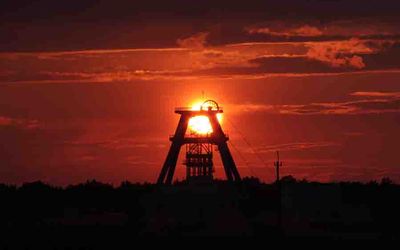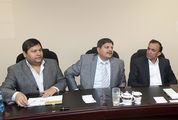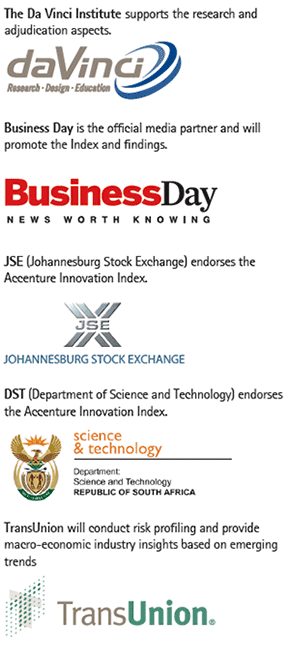Innovation in SA mining is necessary, but tricky
by Jim Porter,
2013-05-09 12:13:19.0
THE mining industry in South Africa needs to innovate to address a myriad of issues such as policy uncertainty, escalating costs, increasing complexity of metal and mineral resources and fluctuating commodity prices. However, miners do innovate within their terms of reference.
Risk appetite is a precursor for innovation, with success often linked to individuals being driven to overcome constraints and their ability to meet the expectations of shareholders.
Another consideration is the level of engineering maturity at mines, which is a function of basic education and longevity of work experience.
For example, in Australian mines considerable innovation is put into the process design and short-term planning, and miners follow this detailed planning, with minimum deviation, as they understand the behind-the-scenes work.
In emerging economies, it appears that there is a much greater reliance on the operational staff to provide the innovation to get the job done. In some instances there is complete disregard of the engineering planning and process design work.
Innovation can be very role-specific — specific in the value chain, in the hierarchy, and in the tasks in which individuals are engaged. Also, the physical properties of the metal or mineral resource can determine the level of technological intervention or investment.
Innovation at the early conceptual stage of a mining project can fundamentally affect economic viability as it relates to the selection of mining methods or extraction processes.
Alternatively, operational innovation can be the difference between closing a mine early or adding years to its operating life.
Mechanisation and automation in mines is not a new initiative. The South African and international mining research organisations have been investing in this since the advent of the industrial age. In the South African gold and platinum sectors, mechanisation has proven to be particularly problematic — mostly as a result of the narrowness of the ore body, leading to excessive mining dilution, and the discontinuity of the mineralisation, leading to inflexible mining designs.
The potential for autonomous mining will require a sustained investment effort for many years to bring to mainstream operations. Innovation is one thing, but other considerations include safety, economic viability and investors’ risk appetite.
• Prof Porter is director at the Centre for Mechanised Mining Systems at the University of Witwatersrand.

Picture: THINKSTOCK
THE mining industry in South Africa needs to innovate to address a myriad of issues such as policy uncertainty, escalating costs, increasing complexity of metal and mineral resources and fluctuating commodity prices. However, miners do innovate within their terms of reference.
Risk appetite is a precursor for innovation, with success often linked to individuals being driven to overcome constraints and their ability to meet the expectations of shareholders.
Another consideration is the level of engineering maturity at mines, which is a function of basic education and longevity of work experience.
For example, in Australian mines considerable innovation is put into the process design and short-term planning, and miners follow this detailed planning, with minimum deviation, as they understand the behind-the-scenes work.
In emerging economies, it appears that there is a much greater reliance on the operational staff to provide the innovation to get the job done. In some instances there is complete disregard of the engineering planning and process design work.
Innovation can be very role-specific — specific in the value chain, in the hierarchy, and in the tasks in which individuals are engaged. Also, the physical properties of the metal or mineral resource can determine the level of technological intervention or investment.
Innovation at the early conceptual stage of a mining project can fundamentally affect economic viability as it relates to the selection of mining methods or extraction processes.
Alternatively, operational innovation can be the difference between closing a mine early or adding years to its operating life.
Mechanisation and automation in mines is not a new initiative. The South African and international mining research organisations have been investing in this since the advent of the industrial age. In the South African gold and platinum sectors, mechanisation has proven to be particularly problematic — mostly as a result of the narrowness of the ore body, leading to excessive mining dilution, and the discontinuity of the mineralisation, leading to inflexible mining designs.
The potential for autonomous mining will require a sustained investment effort for many years to bring to mainstream operations. Innovation is one thing, but other considerations include safety, economic viability and investors’ risk appetite.
• Prof Porter is director at the Centre for Mechanised Mining Systems at the University of Witwatersrand.






















Change: -1.33%
Change: -1.57%
Change: -1.55%
Change: -1.55%
Change: -1.19%
Data supplied by Profile Data
Change: -0.39%
Change: -0.40%
Change: -1.33%
Change: 0.00%
Change: -0.40%
Data supplied by Profile Data
Change: 0.77%
Change: -0.21%
Change: 0.70%
Change: 1.11%
Change: 1.40%
Data supplied by Profile Data
Change: 0.97%
Change: 1.02%
Change: 0.44%
Change: 0.67%
Change: -0.68%
Data supplied by Profile Data